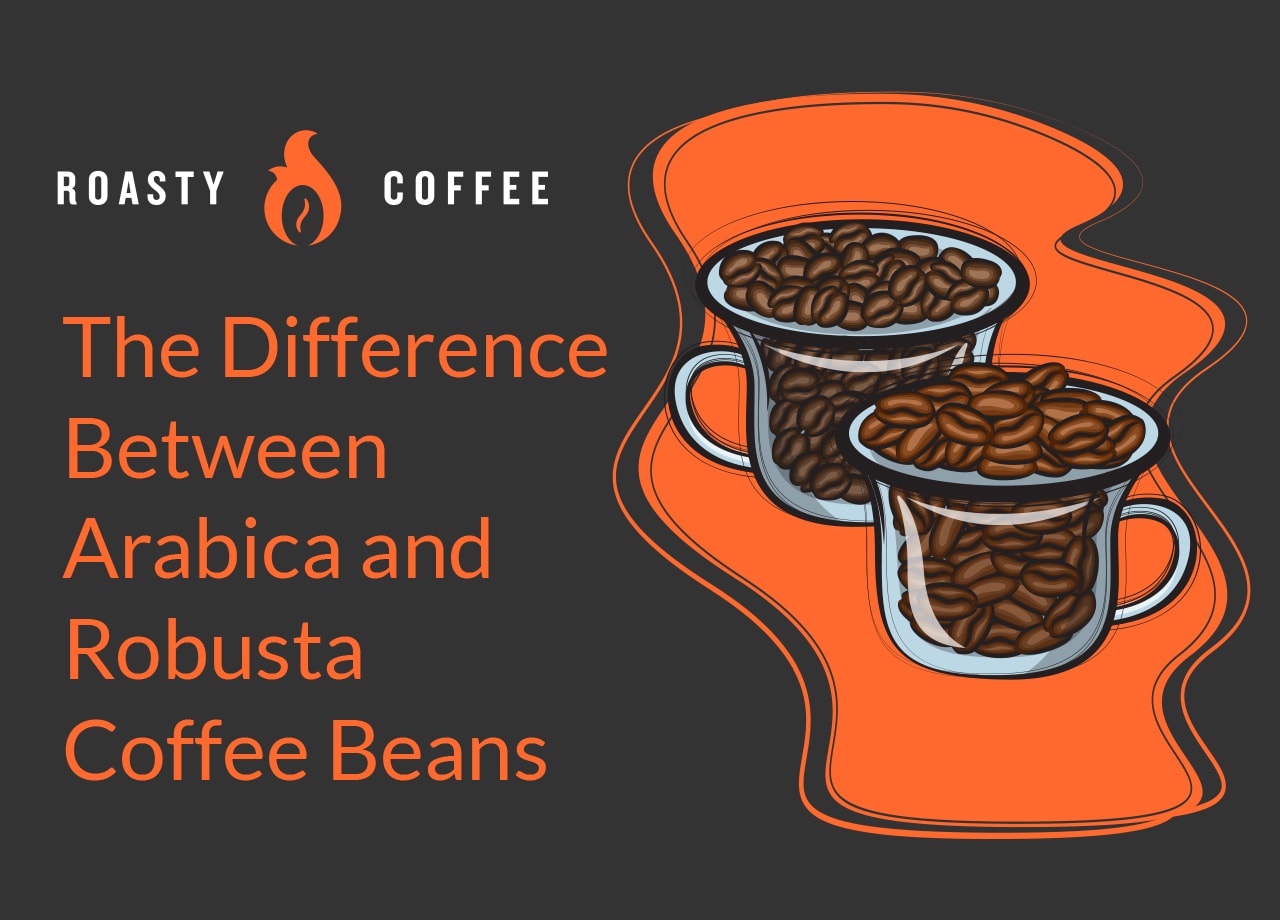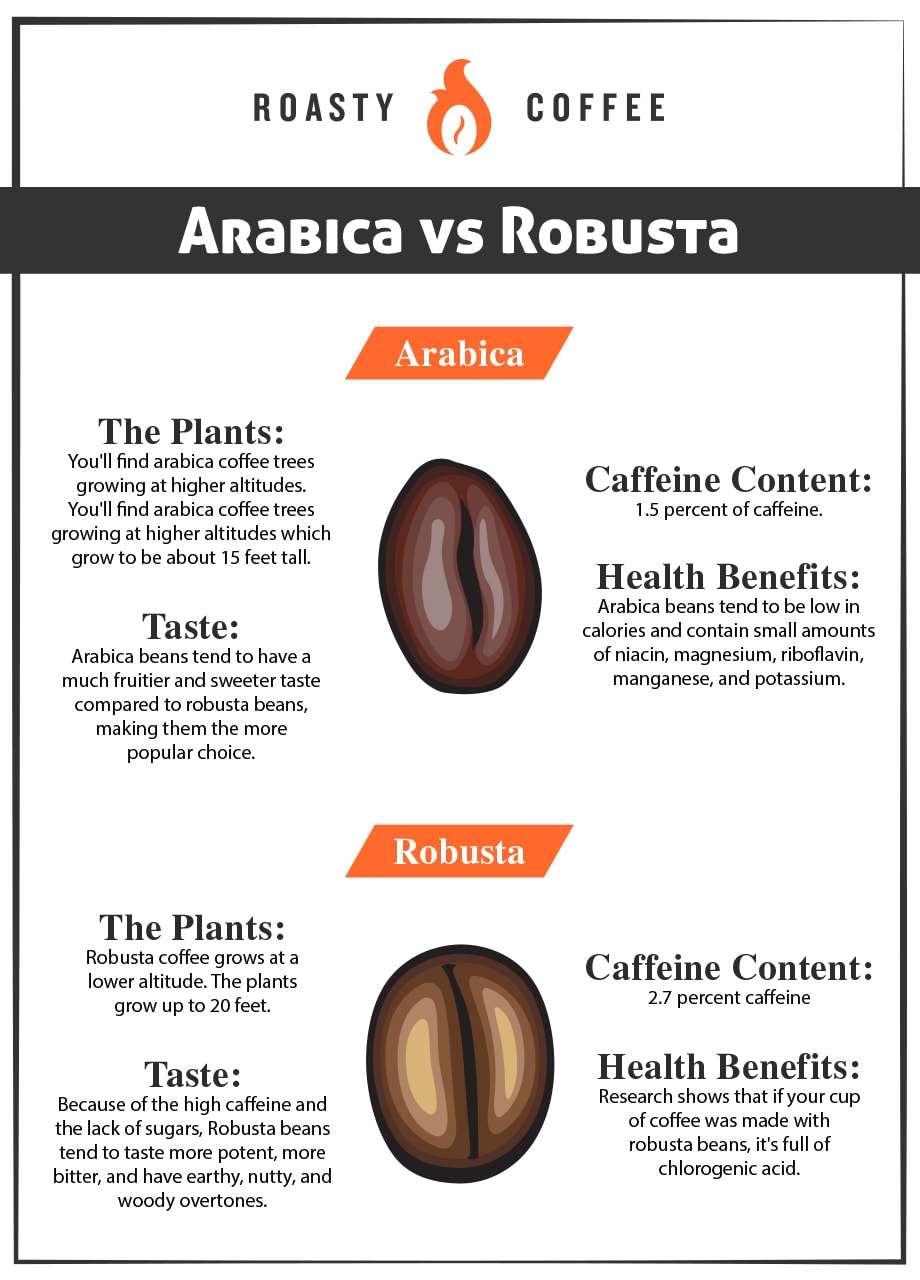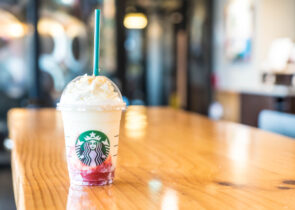
Whether you’re new to the wonderful world of java or are among the group of coffee aficionados who have enjoyed the rich and smooth drink for years, you’ve probably noticed the words arabica or robusta printed on your bag of beans. And if you’re being totally honest, you might admit it: you have no idea what that even means.
No worries; we’ll break it down for you.
Arabica and robusta beans are two of the over 100 different species of coffee. They’re the most commonly cultivated beans for coffee consumption. Great. That answers one of your questions, but now, you’ve probably got dozens more, like what’s the difference between each type of coffee bean, and does it matter which one you choose for your morning coffee?
As we take a closer look at each bean and the fundamental differences between them, you’ll get all the answers you’re looking for, plus a few extra facts for you to whip out the next time you want to wow your coffee-loving friends.
Arabica vs Robusta: A Quick Intro
Before we get into a full breakdown of the beans, here’s what you need to know about these delicious coffees.
Generally, arabica coffee beans are ovular and flat, and they pack a sweet, light, and smooth taste. The beans themselves are oilier than others, too, so you’ll taste all of their sweet, zesty, and fruity flavors on your taste buds. Arabica beans are a coffee industry giant, accounting for about 75 percent of the beans on the market and are typically more expensive to purchase.
On the other hand, beans from the robusta coffee plant are slightly smaller and rounder, and when compared to arabica beans, robusta coffee boasts a more harsh flavor and a bitter taste. Since they have fewer oils, they often have a more natural, earthier flavor profile. These beans make up a much smaller chunk of the world’s coffee production, only occupying about 25 percent of the market, and are often less expensive than those harvested from the arabica plant.

Plants, Cultivation, and Cost
Now, let’s get down to the nitty-gritty and dive into arabica and robusta production.
As mentioned above, arabica coffee is the bean of choice among most coffee fans, mainly because they boast a smooth, soft, and light taste that’s easy to enjoy. Latin America — Brazil, specifically — is currently the largest arabica coffee producer.
You’ll find arabica coffee trees growing at higher altitudes, but unfortunately, they’re more vulnerable to pests and overall more difficult to nurture and harvest than other types of coffee beans. The plants, which grow to be about 15 feet tall, also produce a lower yield, and because of this, it takes a lot more work to harvest the number of beans needed to brew your favorite coffee drinks.
In contrast, robusta coffee beans aren’t as well-known or readily consumed as arabica beans because of their bitter flavor. Unlike arabica beans, robusta coffee grows at a lower altitude. You’ll find them in the eastern hemisphere in Africa, Indonesia, and Vietnam, with Vietnam producing the greatest amount of these beans.
This type of coffee bean is much easier to cultivate, and the plants are less susceptible to pests and diseases. The plants grow up to 20 feet, and they require less attention and care than arabica coffee trees do. They also produce a higher yield, making them more efficient to cultivate.
Arabica coffee beans fetch a much higher price on the market than robusta coffee beans because of the difficulties encountered in growing and harvesting them and the high global demand for them.
Taste
We know most people prefer arabica to robusta beans, but why is that, exactly? It all comes down to taste.
Because of the high caffeine and the lack of sugars, Robusta beans tend to taste more potent, more bitter, and have earthy, nutty, and woody overtones. These beans are perfect for espresso, adding a lot of kick and flavor to any cup of coffee.
Arabica beans tend to have a much fruitier and sweeter taste compared to robusta beans, making them the more popular choice. But you should also note that high-quality robusta beans can taste every bit as good as — or in some cases, better than — arabica coffee.
Robusta joe has a reputation for being an inexpensive and low-quality product compared to arabica coffee, but that’s not the case. These beans bring their own unique flavors to the table, and while they’re not for everyone, coffee drinkers who prefer extra caffeine and a stronger taste think they’re delicious.
Caffeine, Antioxidants, and Sugars
On top of the differences between the plants and the cultivation of these plants, each bean contains different levels of minerals and other chemical compounds.
Robusta beans contain much more caffeine than their arabica counterparts, boasting 2.7 percent in the caffeine content department compared to arabica beans’ 1.5 percent. With almost double the caffeine, these beans are tailor-made for those who need a hearty boost of energy in the morning.
However, the caffeine content isn’t the only difference between the beans. Compared to robusta, arabica coffee contains 60 percent more lipids and almost double the natural sugars; that can definitely impact the taste of the coffee, but we’ll get to that later.
Other Health Benefits of These Beans
Arabica
Arabica beans tend to be low in calories (if you’re drinking it black, anyway) and contain small amounts of niacin, magnesium, riboflavin, manganese, and potassium — those good vitamins and minerals your body needs.
And because arabica coffee is lower in caffeine than robusta beans are, this kind of brew is a better choice for people who need to monitor their caffeine intake but don’t want to switch to decaf coffee. Think pregnant or breastfeeding women, people with cardiovascular issues, or coffee connoisseurs who are often anxious.
Robusta
Research shows that if your cup of coffee was made with robusta beans, it’s full of chlorogenic acid — in fact, it’s got 25 to 80 percent more of the stuff than its arabica counterpart!
You might be wondering if that’s a good or bad thing, but actually, it’s a great thing! Chlorogenic acid (CGA) is an antioxidant most commonly known for lowering blood pressure, but it’s also been linked to weight loss and mood improvement.
Common Questions About These Types of Coffee Beans
Which is better, arabica or robusta?
The winner in the battle between the two popular coffee species depends primarily on your preferences, but most coffee enthusiasts seem to agree that a cup of arabica coffee trumps robusta every time.
Arabica flavor profiles tend to be sweeter and softer, usually with notes of fruits and chocolate. These are the beans that you’re most likely to find on the shelves of your local grocery store’s coffee aisle, but don’t be fooled: just because this is the more popular coffee species doesn’t mean any coffee labeled “arabica” is high-quality joe!
Beans from robusta plants have a less interesting, more bitter flavor profile, which is why most people reach right past them. But just because they aren’t the majority choice doesn’t mean they don’t have a place in the coffee world.
You will find robusta beans used in some of your favorite Italian espresso blends, as they are known to produce a brew a thick, beautiful crema and give a stronger caffeine kick. They’re also almost exclusively used in the production of instant coffee; this is because instant joe is really only known for providing a caffeine fix, not top-notch flavor, so robusta beans are the immediate go-to for producing the just-add-water brew.
How can you visually differentiate between arabica and robusta beans?
It’s pretty difficult to distinguish arabica beans from the counterpart robusta at first glance — after all, once they’re roasted, they’re both very brown and…bean-like. But take a closer look, and you’ll see that arabica beans are bigger and more ovular. Robusta beans, on the other hand, are rounder and smaller.
Which coffee brands use robusta beans?
We mentioned earlier that most of the coffees you’ll find on the market today are made with arabica beans. But that doesn’t mean robusta coffee is obsolete! The high caffeine of robusta beans makes them especially desirable for those who need an extra-strong kick in the pants to get going in the morning. For that reason, you’ll often find them blended with arabica beans, especially in Italian coffees.
Death Wish Coffee is a prime example of a brand making this blend of coffees work, and fans of espresso can taste the arabica-robusta blend if they brew a bag of Lavazza’s Espresso Barista Gran Crema beans.
Is Starbucks Coffee arabica or robusta?
If you pull up to the drive-thru at Starbucks for your morning coffee more often than you pull out your drip coffee machine, you’re probably curious as to what kinds of beans the international coffee franchise uses.
Because the brand prides itself on serving joe with high flavor quality, Starbucks only purchases arabica coffee. The company’s leadership believes the environmental conditions — specifically the elevation at which its grown — needed to grow an arabica coffee shrub lead to more interesting flavor characteristics than those of cheaper coffees. For that reason, Starbucks café exclusively brews beans from arabica plants.
Which has higher acidity, arabica or robusta?
One of the things serious coffee drinkers are concerned about is acidity, so when concerning these two bean varieties, it’s only natural that this question would pop up.
Arabica coffee generally has higher acidity than robusta, which means it’s got a crisp, wine-like taste; the lower acidity option, robusta, is a little earthier and much less sweet.
Wrapping Up
The truth is, both of these beans bring something unique to the coffee world, and we, as coffee lovers, would be doing them a great disservice by declaring one better than the other. Sure, they have different flavor profiles, but since everyone has their preferences, both arabica and robusta have a place in the coffee market.
There are plenty of ways to enhance your cup of joe, and trying a new variety is just one of them, so if you’re a coffee lover looking to expand your palate, it would be worth your while to give both of these beans a chance. Don’t be afraid to experiment with arabica-robusta blends, either!
Happy Caffeinating!









